Finding the perfect chew toy for your dog can feel like an endless quest. You spend your hard-earned money, hopeful that this one will finally last more than an hour, maybe even a day. But too often, before you’ve even had a chance to enjoy the happy sight of your dog with their new treasure, you spot the first tell-tale signs of destruction. We understand that frustration perfectly. As dog owners and caregivers for our extended family at Benafim Dog Shelter, we’ve witnessed countless toys succumb to the mighty jaws of our canine companions.
When it comes to identifying the best toy for a dog to chew on, our dogs are the real experts. They’ve put hundreds of toys to the ultimate test. It’s a bold claim for any product to be called “indestructible,” so we decided to put five popular toys to the rigorous scrutiny of our shelter dogs: Nero, Max, Maya, Black Nero, Jean, and Pebbles. Their feedback is honest, reliable, and without a hint of diplomacy! If you’re searching for a durable chew toy for small dogs or a monster chew for a large breed, our real-world insights will help you make the smartest choice for your furry friend.
Understanding Your Dog’s Chewing Style: The First Step to the Best Toy
Before diving into our reviews, it’s crucial to understand why dogs chew and what kind of chewer your dog is. Chewing is a natural and essential behavior for dogs. It helps keep their teeth clean, strengthens their jaws, relieves stress and boredom, and provides mental stimulation. However, not all chewers are created equal.
Dogs typically fall into three categories:
- Gentle Chewers: These dogs prefer toys that are soft and comforting. They might enjoy gently mouthing and carrying toys.
- Moderate Chewers: These dogs enjoy a good chew but aren’t typically destructive. They’ll wear toys down over time but won’t typically shred them instantly.
- Aggressive Chewers: These dogs are powerhouses. They live to deconstruct toys and can quickly destroy items not designed for heavy chewing. Many large breeds and some high-energy smaller dogs fall into this category.
Identifying your dog’s chewing style is the first step to finding the best toy for them to chew on and ensuring their safety. A toy that’s too soft for an aggressive chewer can become a choking hazard, while a toy that’s too hard for a gentle chewer might cause dental damage.
Our Experts’ Honest Reviews: Finding the Best Toy for Dog to Chew On
We purchased these five toys and observed our dogs for a full week as they chewed, played, stared, carried them into water, buried them, and rediscovered them. Our goal was to assess which truly stands out as the best toy for a dog to chew on when durability and engagement are top priorities. Let’s hear what our canine critics had to say about these “indestructible” contenders.
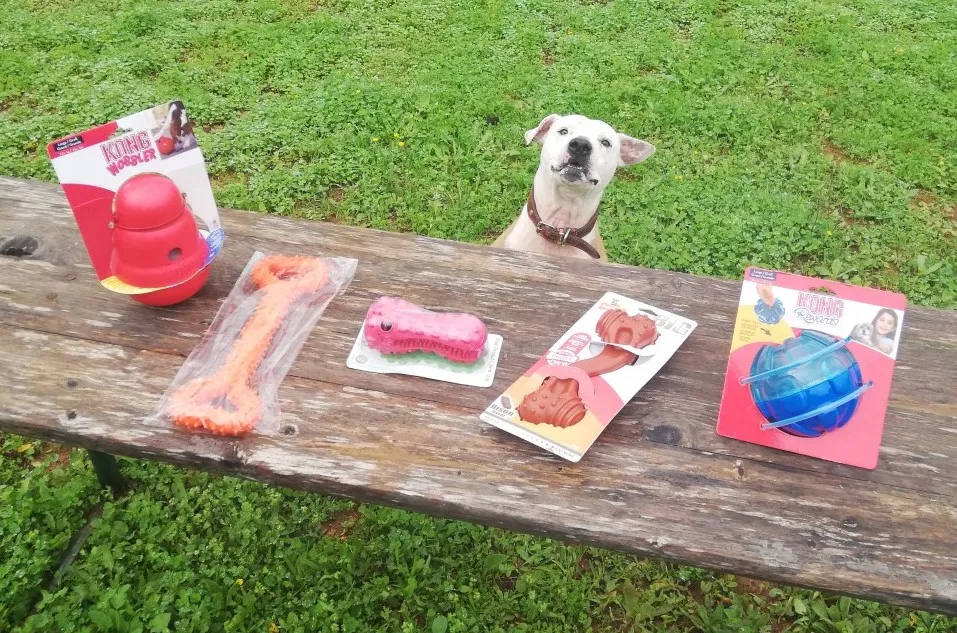 Group of shelter dogs eagerly waiting to test new chew toys
Group of shelter dogs eagerly waiting to test new chew toys
Nylabone Extreme Tough Dog Chew Toy
The Nylabone Extreme Tough Dog Chew Toy, a bison-flavored XXL bone, claims to be perfect for the most powerful chewers and dogs over 23kg. Our 9-year-old Pit Bull, Nero, who is arguably smarter than our entire human team combined, spent countless hours gnawing on this toy. To our delight, it barely showed a mark.
Despite its large size, this Nylabone is surprisingly light, making it easy for dogs to carry around. Its slightly curved design allows for a comfortable grip with their paws, making the chewing process straightforward and deeply satisfying. Even Maya, a 3-year-old rescue who hadn’t experienced toys in her early life, took to this Nylabone immediately. There were no confused looks; she instantly engaged, had a good chew, and loved running around with it, inviting Max to a playful chase.
Cleaning is a breeze (if we can pry it from a dog’s mouth!), and best of all, the Nylabone’s flavor never fades. For dog owners who dread messy or smelly toys, this bone is a dream – absolutely no residue or odor. Black Nero, our Cane Corso cross, is legendary for his powerful chewing. He can effortlessly chew through a massive tree trunk and has even bent strong fencing material when anxious. Yet, this Nylabone proved to be “Black Nero-proof.” He thoroughly enjoyed it, and even after hours of intense chewing, there was hardly a tooth mark on the bone. This definitely makes it a strong contender for the toughest dog toy for aggressive chewers.
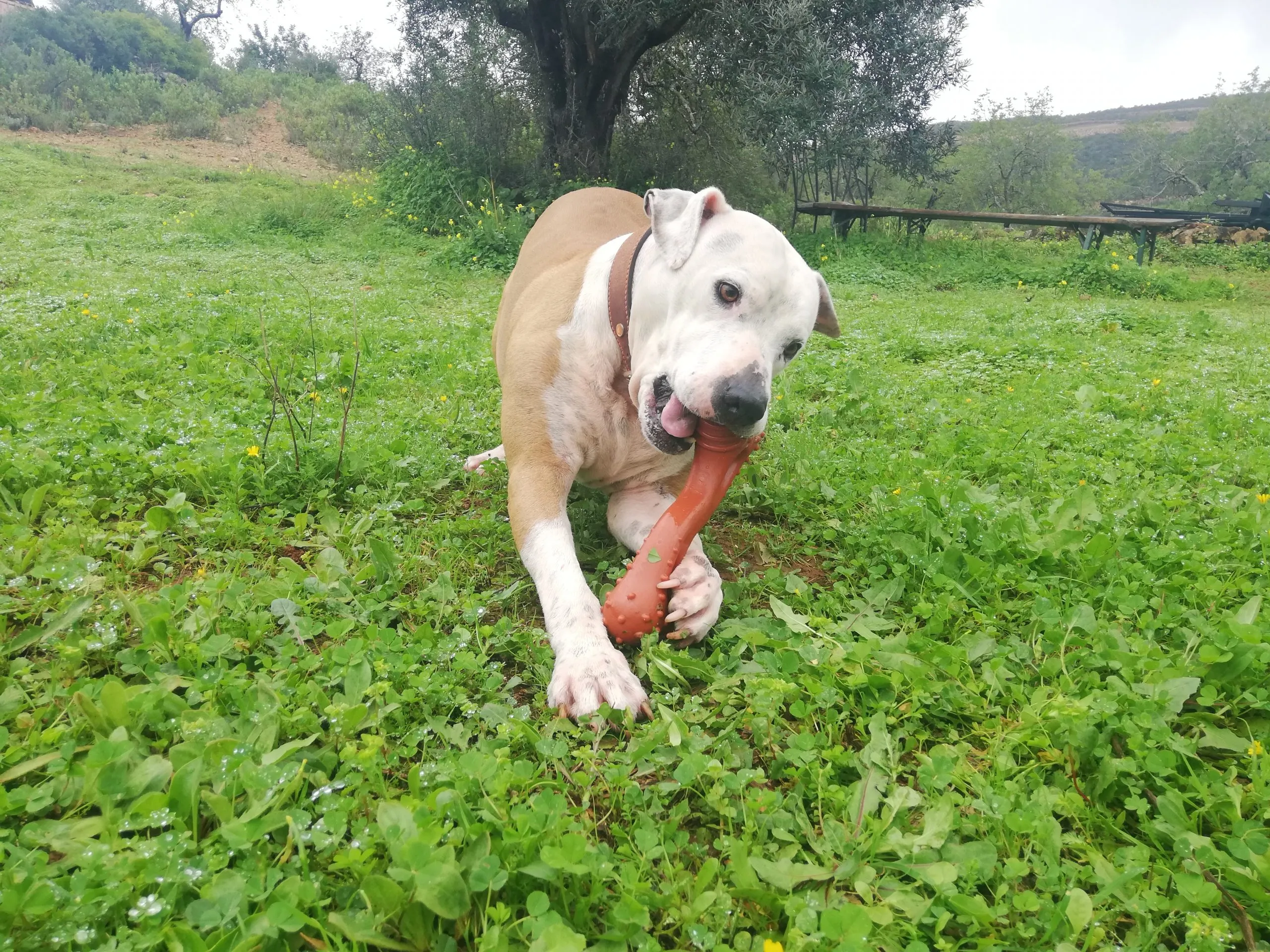 Nero, a handsome white Pit Bull, happily chewing the Nylabone Extreme Tough Dog Chew Toy
Nero, a handsome white Pit Bull, happily chewing the Nylabone Extreme Tough Dog Chew Toy
The Details
- Flavor: Bison (also available in chicken and turkey), flavored throughout to encourage chewing.
- Features: Raised nubs help clean teeth and gums. Safe and non-toxic.
- Measurements: 30.48 x 13.97 x 5.08 cm
- Weight: 485 grams
- Designed for: Dogs 23 kg and above.
Summary
Every single dog at the shelter, paws on heart, recommends this Nylabone. Their advice: if your dog loves to chew, gets bored easily, and needs something truly tasty and durable to sink their teeth into, then this could be the best toy for them to chew on. It truly lives up to its “extreme tough” claim, standing out as a premier durable dog chew toy.
Kong Rewards Ball
The Kong Rewards Ball initially met with less enthusiasm from our reviewers compared to other toys, but this reaction was short-lived. The concept of combining a fun play toy with a treat dispenser is undeniably clever. For us humans, inserting treats was incredibly easy. Unlike some more complicated dispensers, dogs didn’t need a high IQ to figure out how to get the rewards.
However, our dogs seemed to appreciate the soft, bouncy rubbery side more than the treat-dispensing feature. Jean, in particular, absolutely adored this toy, often burying it after hours of chewing the rubbery surface, only to dig it up again. His best mate, Komo, barely got a look in, much to his dismay. The Kong Rewards Ball proved to be quite robust, suitable for tough dog toys for large breeds too.
It wasn’t just Jean’s singular opinion. From enormous Jambo to tiny Star, every dog at the shelter had a good play and chew. Not a single tooth mark was found on the rubber, nor were any treats left inside, confirming its effectiveness as a simple yet engaging treat dispenser.
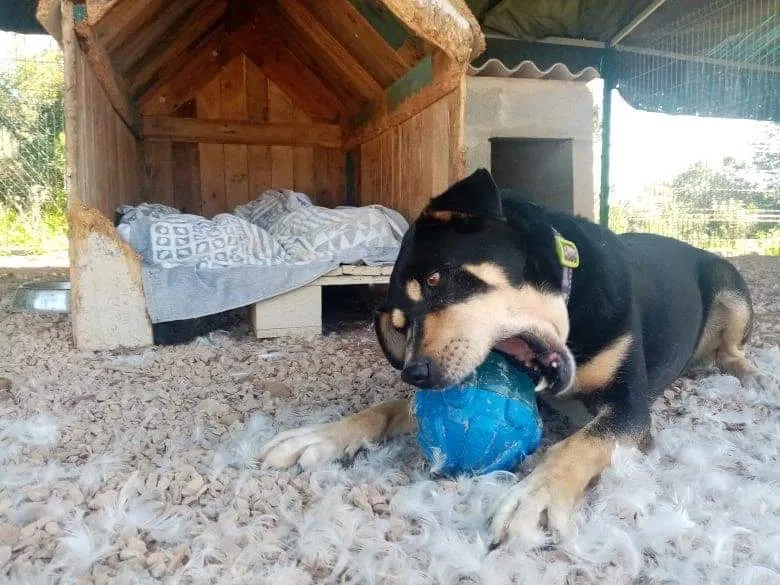 Jean, a shelter dog, focused on chewing his Kong Rewards Ball
Jean, a shelter dog, focused on chewing his Kong Rewards Ball
The Details
- Material: Durable Kong rubber.
- Features: Treat-dispensing, bouncy, interactive.
- Measurements: 12.7 x 12.7 x 12.07 cm
- Weight: 417 grams
- Designed for: Dogs 16 kg and above.
Summary
Our dogs feel this Kong Rewards Ball is an excellent all-rounder, combining two of their favorite activities: play and food. It’s a durable and tough toy that withstands significant chewing, bouncing, and interactive play, all while serving as a simple and effective treat dispenser. It’s a great option for dogs who enjoy a challenge and a rewarding chew.
CyunCmay Indestructible Dog Toy XL Bone
The CyunCmay Indestructible Dog Toy XL Bone was met with the most initial excitement as we unwrapped it. Sadly, this excitement quickly turned to disappointment once Black Nero got his powerful paws and teeth on it. He did have an immense amount of fun for about 30 minutes, playing tug-of-war with the handles, enjoying a vigorous chew, and fetching it from the lake.
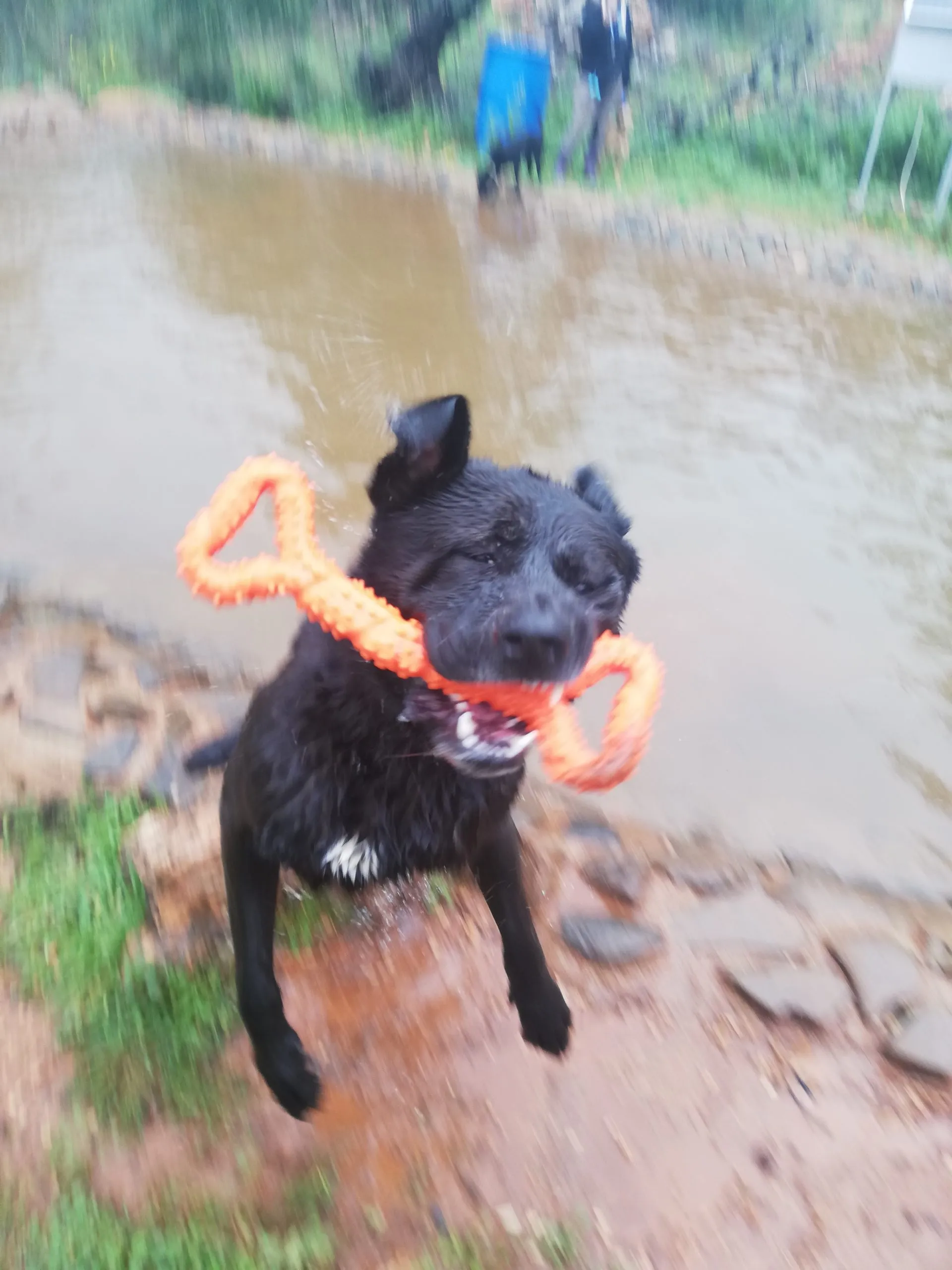 Black Nero in mid-air, enthusiastically testing the CyunCmay XL bone
Black Nero in mid-air, enthusiastically testing the CyunCmay XL bone
With its soft, rubbery, bendy material, we had feared it wouldn’t withstand our dogs’ rigorous testing. Black Nero, with his extreme chewing habits, sadly proved us right very quickly. The results speak for themselves: significant teeth marks appeared, and the bone was nearly split in two within half an hour. This toy might be marketed as “indestructible,” but it certainly wasn’t for our aggressive chewers. For dogs who chew through everything, this is likely not the best toy for them to chew on.
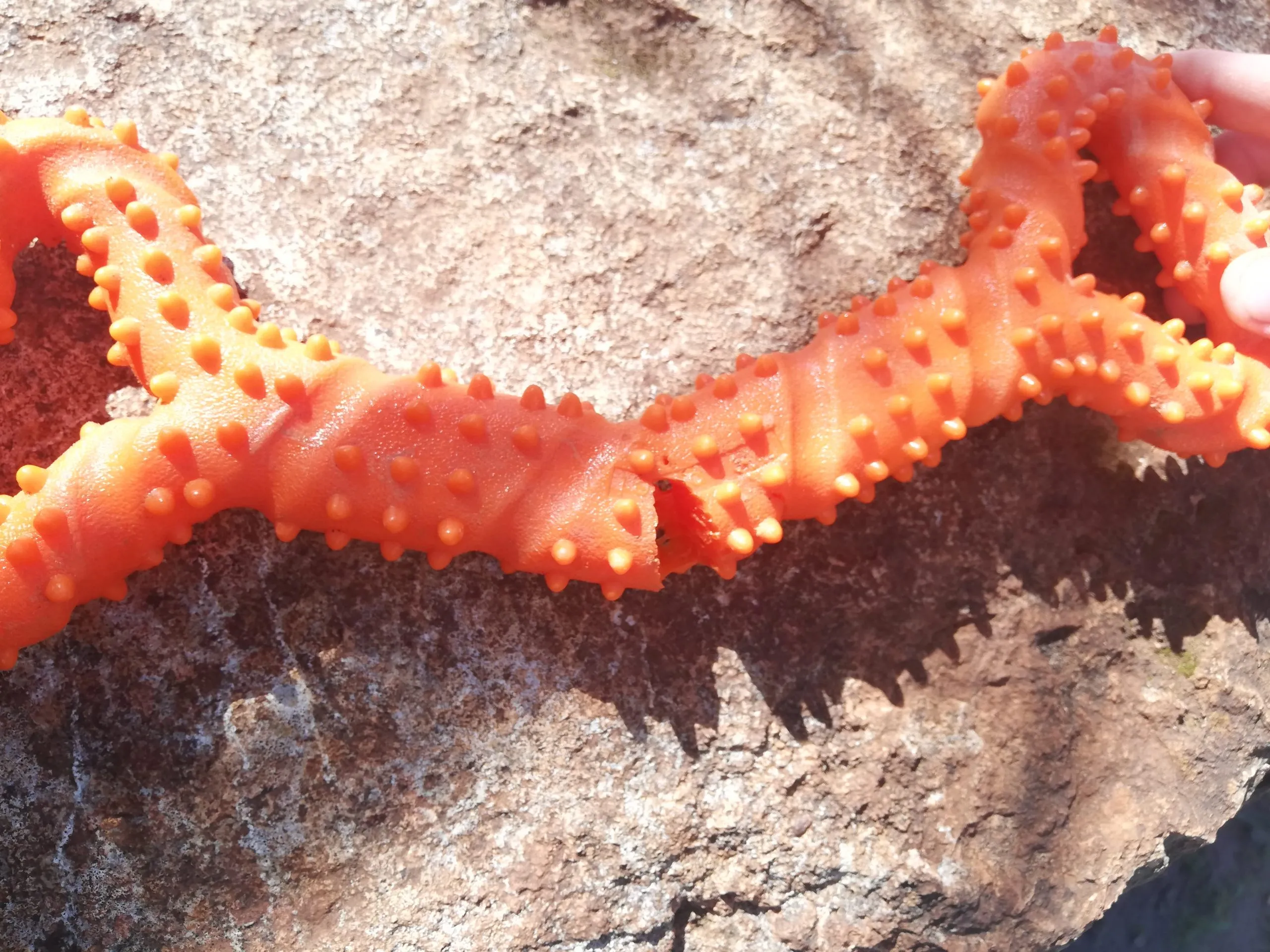 CyunCmay XL bone showing visible teeth marks and damage after only 30 minutes of chewing
CyunCmay XL bone showing visible teeth marks and damage after only 30 minutes of chewing
The Details
- Material: TPR environmentally friendly material (rubber-like), no chemical smell, safe and non-toxic.
- Features: Surface designed to help clean teeth and control plaque/tartar. Handles for tug-of-war.
- Measurements: 32.9 x 12.2 x 3.8 cm
- Weight: 330 grams
- Designed for: Medium to large size dogs.
Summary
Although described as strong and durable, and suitable for medium to large dogs, our dogs’ real-world results told a different story. “Indestructible”? No. Fun for a short while? Yes, definitely for retrieving and interactive play. If you’re looking for a toy for dogs to chew that won’t be broken in minutes by a serious chewer, this is not the toy for your dog. Our dogs were visibly disappointed when their fun with this toy was so short-lived.
HETOO Indestructible Squeaky Dental Care Dog Toy
This HETOO toy is primarily designed for dental care, but it was met with such unenthusiastic faces from our canine experts that we were genuinely perplexed. Even its squeak didn’t ignite much excitement. Maya, our brave girl, initially ran and hid when she heard the strange noise from this odd-looking red object. Eventually, she cautiously approached and inspected it for a few moments.
To try and make this “toy” more interesting, we filled its grooves with peanut butter, hoping to encourage our reviewers to chew. This kept Maya engaged for a mere few minutes before she wandered off, leaving the toy behind. This toy did not score high on our list for the best toy for a dog to chew on based on engagement.
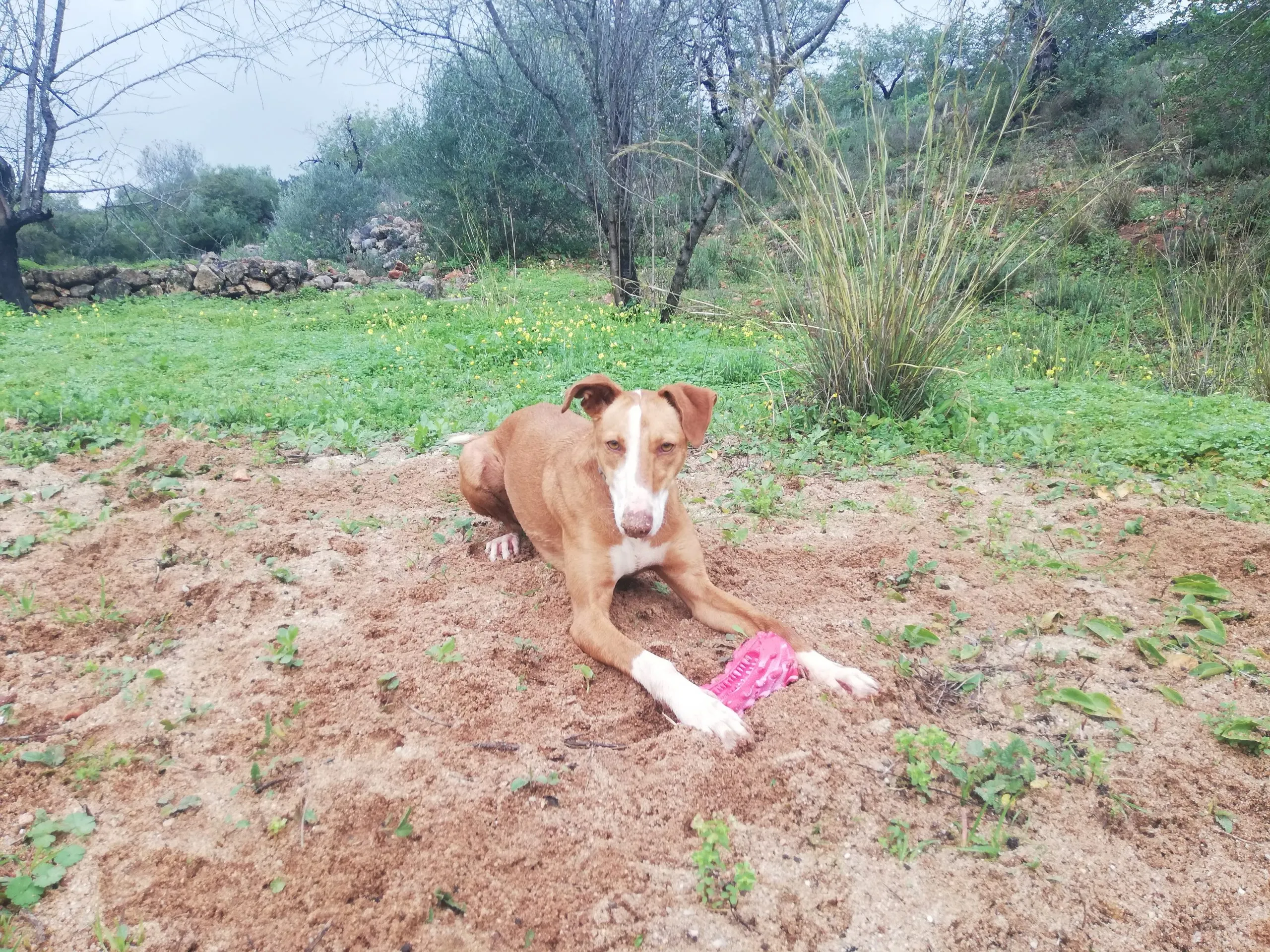 Maya, a shelter dog, hesitantly inspecting the red HETOO dental toy
Maya, a shelter dog, hesitantly inspecting the red HETOO dental toy
The Details
- Material: Natural rubber.
- Features: Squeaker, dental cleaning grooves.
- Measurements: 12.7 x 12.7 x 12.07 cm
- Weight: 417 grams
Summary
The HETOO toy simply didn’t excite or entertain our dogs for more than a few minutes. Did we mention it squeaks? Annoyingly so for us humans! Black Nero and Maya were the only ones who showed any interest whatsoever, and even that was very short-lived. While its dental benefits might be valid, its appeal as a chew toy for engagement and entertainment was minimal according to our testers.
Kong Wobbler Interactive Treat Dispensing Dog Toy
The dogs’ initial reaction to this Kong Wobbler was absolutely hilarious. Was it a bird? A plane? A UFO? Its size – it’s big! – certainly contributed to the confusion. Unlike many other Kong treat toys made of rubber, this one is crafted from a harder plastic polymer. From a human’s perspective, the twist-off lid makes it incredibly easy to fill with treats. However, our canine experts initially struggled. They wanted to play and understood treats were inside, but couldn’t quite figure out how to get them out.
We humans then had an “aha!” moment: the Kong Wobbler needs to be used on smooth surfaces, not the stone pebbly kennels our dogs usually play in. And, of course, the treat size needs to be compatible with the dispenser hole – a classic “Doh!” moment. Once these factors were addressed, the game changed entirely.
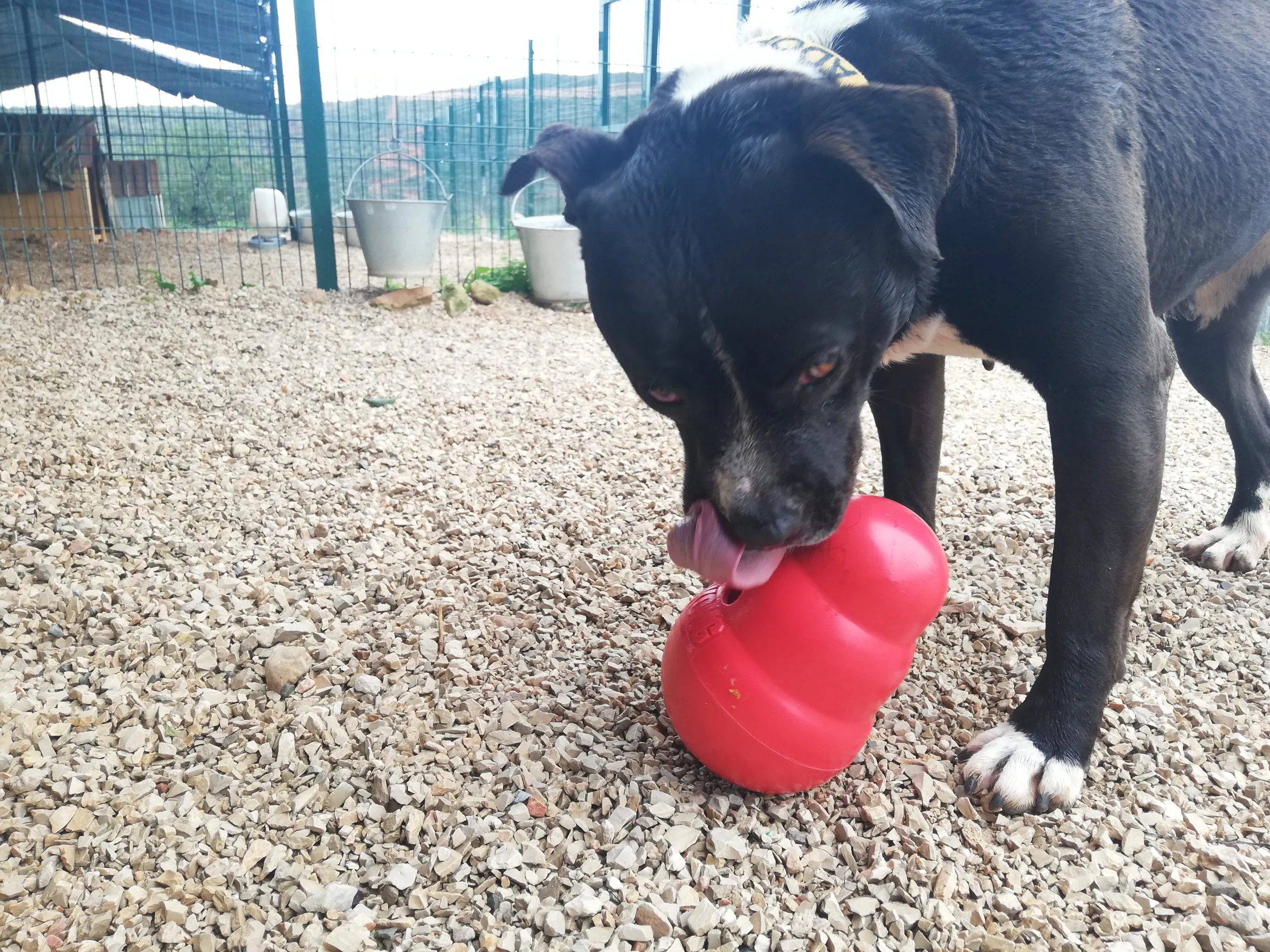 Pebbles, a shelter dog, interacting with the Kong Wobbler treat dispenser
Pebbles, a shelter dog, interacting with the Kong Wobbler treat dispenser
The Details
- Material: Hard plastic polymer.
- Features: Interactive treat dispensing, wobbling action, easy-to-fill twist-off lid.
- Measurements: Diameter 13 x 19 cm
- Weight: 485 grams
- Designed for: Dogs 12 kg and above.
- Maximum Filling Capacity: 250 grams.
Summary
Once our dogs understood how this toy worked and we humans realized it needed a smooth surface, this Kong Wobbler became a huge hit. Its large size makes it challenging for dogs to pick up and chew directly, which is actually a good thing as it reduces the chance of destruction. “Indestructible”? According to our dogs, yes, from a chewing perspective. “Easy to use”? Yes, once the humans ensure the treat size is appropriate for the dispenser hole. This toy excels at providing mental stimulation and rewarding play, making it a fantastic interactive option.
Key Factors When Choosing the Best Chew Toy for Your Dog
Beyond specific product reviews, understanding general principles for choosing a chew toy is vital for your dog’s safety and satisfaction. When seeking the best toy for your dog to chew on, consider these important aspects:
- Material Durability: For aggressive chewers, look for toys made from very tough materials like hardened rubber, nylon, or specialized plastics. Avoid soft rubber or flimsy plastics that can be easily shredded and ingested.
- Size and Shape: The toy should be appropriately sized for your dog. Too small, and it becomes a choking hazard. Too large, and it might be difficult for them to comfortably chew. Odd shapes can provide a better grip or more engaging texture.
- Purpose: Are you looking for a toy for dental health, mental enrichment, or simply to satisfy a strong urge to chew? Dental toys often have ridges or nubs, while enrichment toys typically dispense treats.
- Safety Features: Ensure the toy is non-toxic. Check for any small parts that could break off and be swallowed. Regularly inspect chew toys for damage and replace them when they show signs of wear to prevent potential hazards.
By keeping these factors in mind, you can narrow down your choices and find a high-quality, safe chew toy that your dog will love.
Top Recommendations: Finding Your Dog’s “Best Toy to Chew On”
After extensive testing by our resident canine experts at Benafim Dog Shelter, we have a clear verdict on the best toy for a dog to chew on, depending on your dog’s specific needs and chewing habits.
For the aggressive chewer who needs a truly long-lasting solution and excellent dental benefits, the Nylabone Extreme Tough Dog Chew Toy stands head and shoulders above the rest. It survived our most powerful chewers with flying colors, offering hours of engaging and flavored chewing without any mess or damage. This is unequivocally one of the most durable chew toys for large dogs we tested.
If your dog is a moderate to strong chewer who also thrives on mental stimulation and rewards, the Kong Rewards Ball is an outstanding choice. It’s incredibly tough and provides a fun, interactive way to dispense treats, keeping dogs amused and engaged for extended periods.
For dogs who enjoy interactive play and mental enrichment but aren’t necessarily power chewers looking to destroy, the Kong Wobbler Interactive Treat Dispensing Dog Toy is a fantastic option. Once correctly set up, it offers a rewarding challenge that taps into a dog’s natural foraging instincts without inviting heavy chewing that could lead to breakage.
Unfortunately, the CyunCmay Indestructible Dog Toy XL Bone and the HETOO Indestructible Squeaky Dental Care Dog Toy did not meet our high expectations for durability or sustained engagement, especially for dogs who love to chew. They might be suitable for very gentle chewers or for supervised interactive play where chewing is not the primary activity.
Conclusion
The quest for the best toy for a dog to chew on often ends in frustration, but our real-world tests by the dogs of Benafim Dog Shelter offer clear, trustworthy recommendations. Finding the right chew toy is essential for your dog’s dental health, mental well-being, and overall happiness. It also saves you money and spares you the disappointment of quickly shredded toys.
Based on the rigorous trials by our furry panel, the Nylabone Extreme Tough Chew Toy is the undisputed champion for power chewers, proving its mettle against even the most determined jaws. For a blend of durability and rewarding fun, the Kong Rewards Ball is an excellent choice. And for engaging mental stimulation, the Kong Wobbler provides a challenging and safe interactive experience. Always remember to consider your dog’s individual chewing style, size, and safety when selecting any toy. Your dog deserves the best, and with these insights, you’re well on your way to finding their perfect chew companion!
